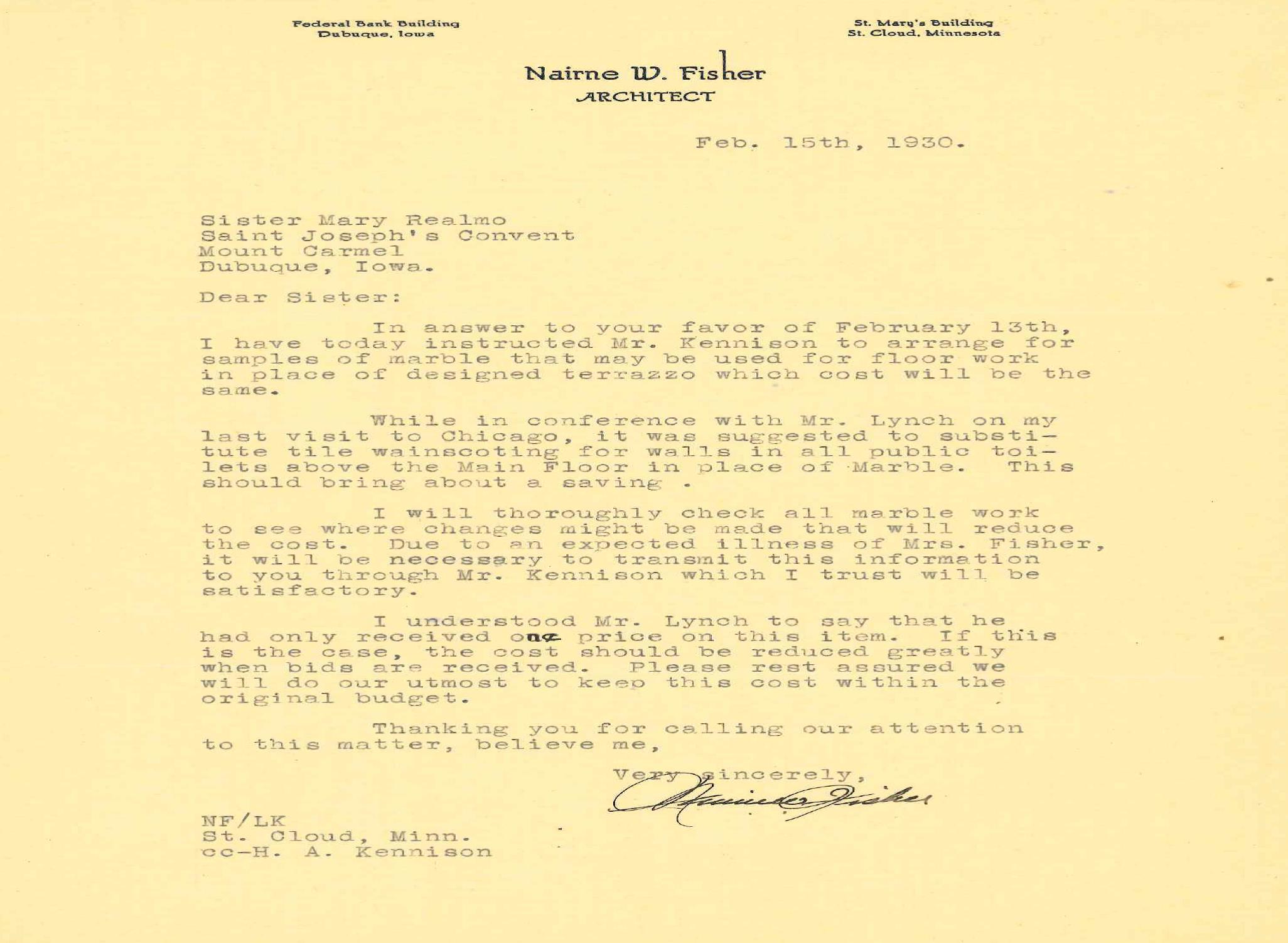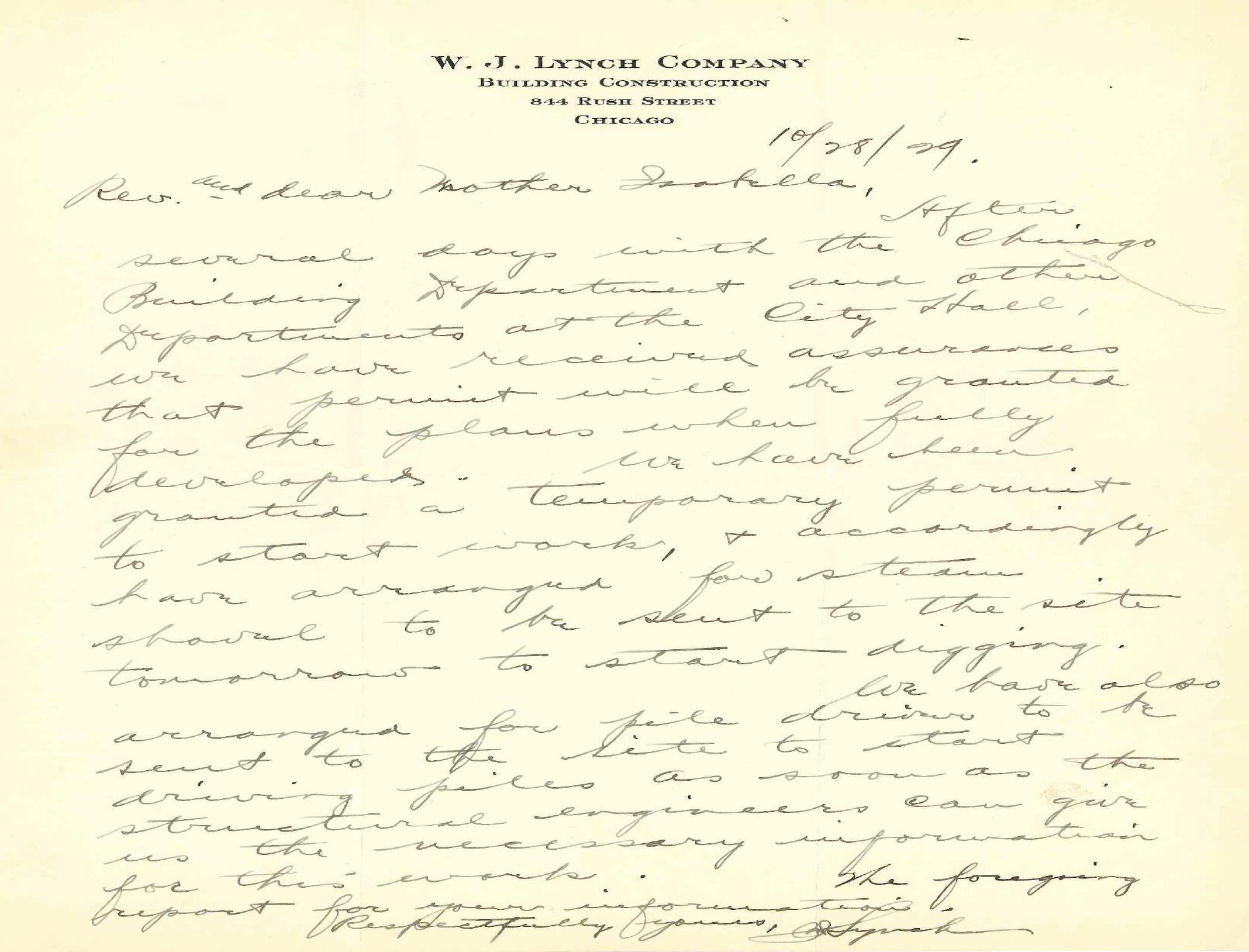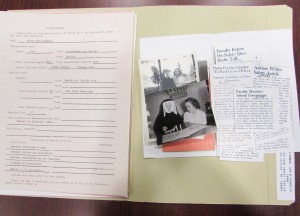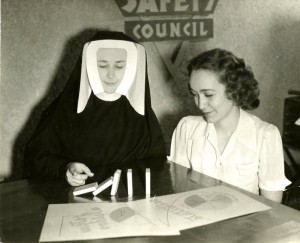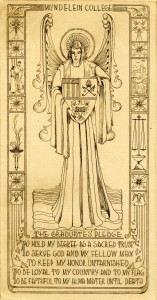With the start of October comes many changes; cozy sweaters, hot chocolate, pumpkin spice, and, of course, Halloween. There is nothing more appropriate for this month than a good scary story, and luckily, here at the WLA we have one in our very own collection! There is an account told by Sister Mary Ernestine, BVM* of stories she heard from Sister Isabella Kane** of strange happenings experienced by her and other sisters. Here is that story:
Sister Isabella Kane was about fourteen years old when she entered the BVM Community and having experience with piano, she was sent to teach music. She was a natural and enjoyed her time teaching, but especially loved painting in the music room after night prayers when it was empty. One night Sister was painting when the door suddenly flew open. Thinking it was one of the sisters trying to mess with her, she paid it no mind and shut the door. She settled down to continue painting when the door flew open again. After checking the hallway and finding it empty, she ran to bed.
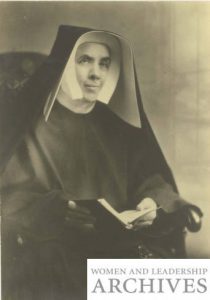
Mother Superior Mary Isabella Kane, BVM
That wasn’t the last time Sister Isabella would experience strange occurrences.
Sister Isabella and the other sisters rented a large three story double house to be used as a school as well as house the sisters. The sisters living in the convent complained of noises: banging on doors, knocking of wooden beds, and other demonstrations of what they believed was “the Evil One.”
One sister was thrown off her bed, another was unable to control violent trembling as night approached, and one more found as she headed down the stairs, two fireballs appeared in the landing. Though the superior was not convinced of any haunting (and believed it to be all coming from the sisters’ active imaginations), she agreed to move from that home for everyone’s health.
Though we have no way to be sure if it truly was “the Evil One” haunting the sisters, the mystery still persists. So Happy Halloween everyone, hope it’s a spooky one!
*BVM stands for Sisters of Charity of the Blessed Virgin Mary, a religious order out of Dubuque, IA.
**Sister Isabella later served as Mother Superior of the BVMs from 1919-1931.
Tina is a Sesquicentennial Scholar at the WLA working to highlight Mundelein in the upcoming 150th anniversary of Loyola. She is currently working on her masters degree in Digital Humanities. Tina is a reformed ice cream hater and is a fan of the flavor Savannah Buttermint at Jeni’s.
Loyola University Chicago’s Women and Leadership Archives Blog is designed to provide a positive environment for the Loyola community to discuss important issues and ideas. Differences of opinion are encouraged. We invite comments in response to posts and ask that you write in a civil and respectful manner. All comments will be screened for tone and content and must include the first and last name of the author and a valid email address. The appearance of comments on the blog does not imply the University’s endorsement or acceptance of views expressed.


